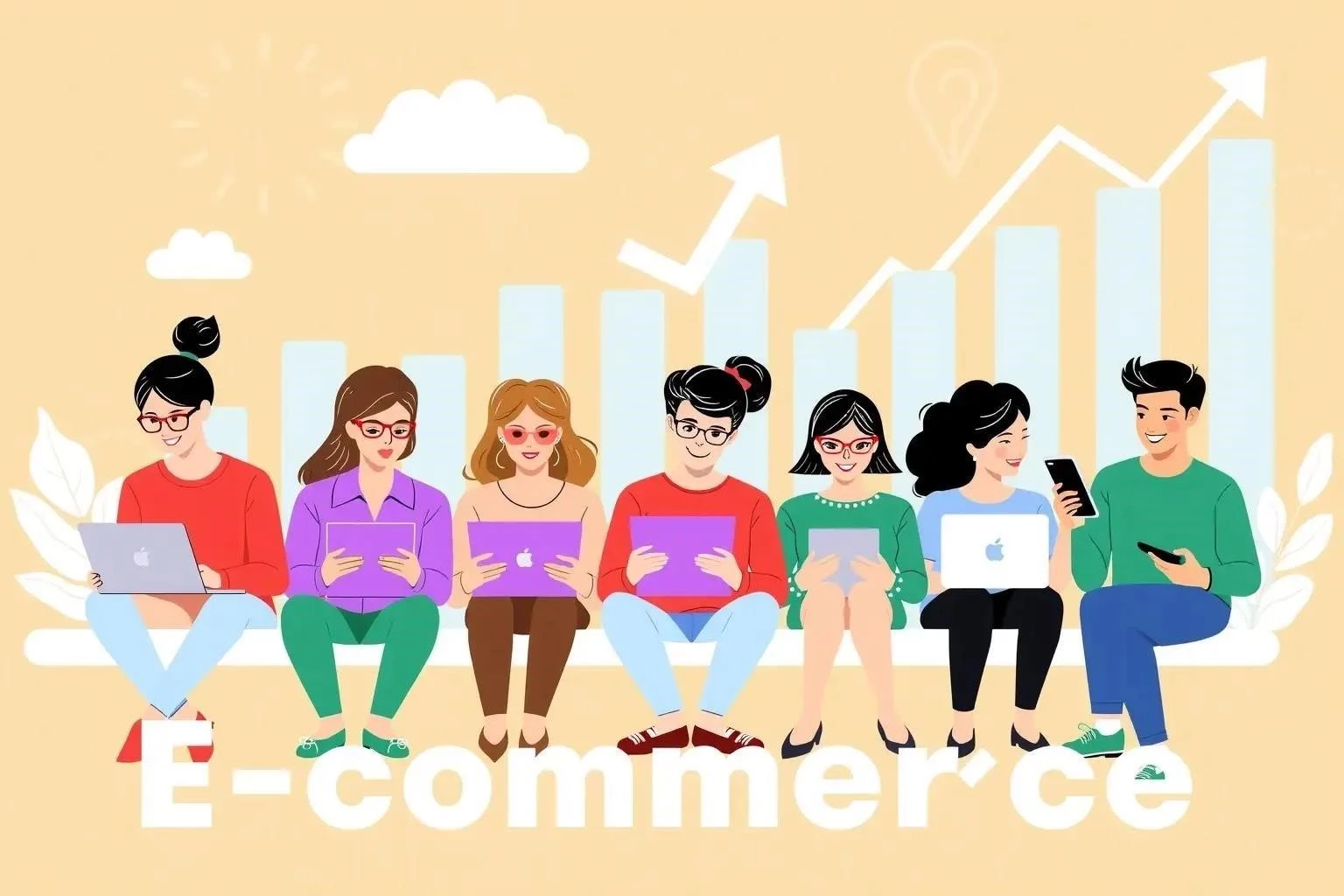The COVID-19 pandemic irrevocably altered the global landscape, impacting nearly every facet of daily life, and the world of commerce was no exception․ Lockdowns, social distancing measures, and a general fear of physical contact fueled a dramatic shift towards online shopping․ This surge in e-commerce adoption wasn’t just a temporary blip; it represented an acceleration of pre-existing trends, fundamentally reshaping the retail industry and consumer behavior․ Let’s delve into the specifics of how the pandemic propelled e-commerce to unprecedented heights․
Factors Contributing to E-Commerce Boom
Several key factors contributed to the exponential growth of e-commerce during the pandemic:
- Lockdowns and Restrictions: Physical stores were closed or had limited capacity, forcing consumers to turn to online alternatives․
- Fear of Contamination: Concerns about contracting the virus in public spaces made online shopping a safer option․
- Convenience and Accessibility: E-commerce offered a convenient and accessible way to purchase goods and services from the comfort of home․
- Government Stimulus: Government stimulus checks provided consumers with additional disposable income, some of which was spent online․
- Enhanced Digital Infrastructure: Improvements in internet access and online payment systems facilitated the adoption of e-commerce․
Impact on Different E-Commerce Segments
The pandemic impacted different e-commerce segments in varying degrees․ Some sectors experienced explosive growth, while others faced challenges․
Winners
- Groceries and Essentials: Online grocery shopping saw a massive surge as people avoided crowded supermarkets․
- Home Goods and Furniture: With people spending more time at home, demand for home improvement products and furniture increased․
- Electronics and Entertainment: Consumers invested in electronics and entertainment options to stay connected and entertained during lockdowns․
Challenges
Some e-commerce businesses, particularly those selling luxury goods or travel-related products, faced significant challenges due to reduced consumer spending and travel restrictions․
Comparative Analysis: Pre-Pandemic vs․ Post-Pandemic E-Commerce
| Parameter | Pre-Pandemic (2019) | Post-Pandemic (2021) |
|---|---|---|
| E-Commerce Sales Growth | ~15% per year | ~30-40% per year |
| Online Penetration Rate | ~15% of total retail sales | ~20-25% of total retail sales |
| Consumer Habits | Occasional online purchases | Frequent and habitual online purchases |
The Future of E-Commerce
While the peak of the pandemic-induced e-commerce boom may have passed, the changes it brought about are likely to be permanent․ E-commerce is expected to continue to grow, albeit at a more moderate pace, as consumers retain their newfound online shopping habits․ Businesses need to adapt to this new reality by investing in their online presence, optimizing the customer experience, and embracing new technologies․
FAQ Section
Q: Was the growth of e-commerce during COVID-19 sustainable?
A: While the initial surge was unsustainable, the pandemic accelerated long-term trends and changed consumer behavior, leading to a lasting increase in e-commerce adoption․
Q: What are the biggest challenges facing e-commerce businesses today?
A: Some of the biggest challenges include supply chain disruptions, rising shipping costs, and increasing competition․
Q: How can businesses adapt to the evolving e-commerce landscape?
A: Businesses can adapt by investing in their online presence, optimizing the customer experience, embracing new technologies, and focusing on sustainability․
Strategies for E-Commerce Success in the Post-Pandemic Era
The e-commerce landscape is continually evolving, demanding constant adaptation and innovation․ To thrive in this dynamic environment, businesses should consider the following strategies:
Enhance Customer Experience
In a crowded online marketplace, customer experience is paramount․ Focus on creating a seamless, personalized, and engaging shopping journey․
- Optimize Website and Mobile App: Ensure your website and mobile app are user-friendly, fast-loading, and mobile-responsive․ Prioritize clear navigation, intuitive search functionality, and high-quality product images and descriptions․
- Personalize Customer Interactions: Leverage data analytics to personalize product recommendations, marketing messages, and customer service interactions․ Tailor the shopping experience to individual preferences and behaviors․
- Provide Excellent Customer Support: Offer multiple channels for customer support, including email, phone, and live chat․ Train your support team to be responsive, knowledgeable, and empathetic․ Address customer concerns promptly and efficiently․
- Implement a Robust Returns Policy: A generous and hassle-free returns policy can significantly boost customer confidence and encourage repeat purchases․ Clearly communicate your returns policy and make the process as easy as possible․
Optimize Supply Chain and Logistics
Efficient supply chain management and logistics are crucial for fulfilling orders on time and minimizing costs․
- Diversify Suppliers: Reduce reliance on single suppliers to mitigate the risk of supply chain disruptions․ Explore alternative sourcing options and build relationships with multiple suppliers․
- Invest in Inventory Management: Implement an inventory management system to track stock levels, forecast demand, and optimize inventory allocation․ Avoid stockouts and overstocking to maximize efficiency and minimize waste․
- Streamline Order Fulfillment: Automate order processing and fulfillment to reduce errors and speed up delivery times․ Consider outsourcing fulfillment to a third-party logistics (3PL) provider to leverage their expertise and infrastructure․
- Optimize Shipping and Delivery: Offer a variety of shipping options to cater to different customer needs and budgets․ Negotiate competitive shipping rates with carriers and explore alternative delivery methods, such as local delivery or click-and-collect․
Embrace New Technologies
Staying ahead of the curve requires embracing emerging technologies that can enhance efficiency, improve customer experience, and drive innovation․
- Artificial Intelligence (AI): Use AI-powered chatbots for customer service, personalized product recommendations, and fraud detection․
- Augmented Reality (AR): Integrate AR technology to allow customers to virtually try on clothes, visualize furniture in their homes, and interact with products in new ways․
- Blockchain: Explore blockchain technology for secure and transparent supply chain management and product authentication․
- Data Analytics: Leverage data analytics to gain insights into customer behavior, identify trends, and optimize marketing campaigns․
Focus on Sustainability
Consumers are increasingly concerned about the environmental impact of their purchases․ Demonstrating a commitment to sustainability can attract environmentally conscious customers and enhance your brand image․
- Use Sustainable Packaging: Opt for eco-friendly packaging materials, such as recycled cardboard, biodegradable plastics, and compostable packaging․
- Reduce Carbon Footprint: Minimize your carbon footprint by optimizing shipping routes, using energy-efficient warehouses, and offsetting carbon emissions․
- Promote Ethical Sourcing: Ensure that your products are sourced ethically and sustainably․ Work with suppliers who adhere to fair labor practices and environmental standards․
- Offer Sustainable Products: Expand your product line to include sustainable alternatives, such as organic clothing, eco-friendly cleaning products, and upcycled furniture․
Adapt to Changing Consumer Preferences
The e-commerce landscape is constantly evolving, and businesses must remain agile and responsive to changing consumer preferences․
- Monitor Trends: Stay informed about the latest e-commerce trends, such as social commerce, mobile commerce, and voice commerce․
- Gather Customer Feedback: Regularly solicit feedback from customers to understand their needs and expectations․ Use surveys, focus groups, and social media listening to gather insights․
- Experiment and Iterate: Don’t be afraid to experiment with new strategies and tactics․ Continuously iterate and refine your approach based on data and feedback․
- Stay Competitive: Monitor your competitors and benchmark your performance against industry standards․ Identify areas where you can improve and differentiate yourself․
By implementing these strategies, e-commerce businesses can position themselves for success in the dynamic and competitive post-pandemic era․ Remember that continuous adaptation and a customer-centric approach are key to long-term growth and sustainability․


